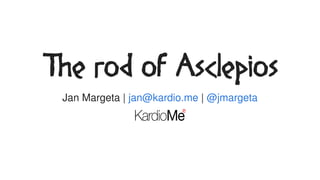
The rod of Asclepios: Machine learning in Python for cardiac image analysis, Jan Margeta
- 6. Imaging of our hearts X-Ray ultrasound fluoroscopy computed tomography magnetic resonance Kelly 2007 Carmo et al. 2010 Arnold et al. 2008 Foley et al. 2010 Vanezis et al. 2011
- 17. Example: Cardiac view recognition , Joint work with and Margeta et al. 2015 Inria Microsoft Research Cambridge
- 33. Got unlabeled data? Don't be lazy, just annotate it if you can, there are tools to help you See in Scikit-learn , Joint work with and Margeta et al. 2015 Inria Microsoft Research Cambridge Label Propagation example
